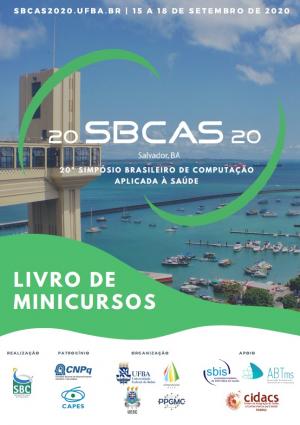Minicursos do XX Simpósio Brasileiro de Computação Aplicada à Saúde
Palavras-chave:
Computação Aplicada à Saúde, SBCAS 2020Sinopse
O Livro de Minicursos do SBCAS 2020 traz os textos dos minicursos selecionados e apresentados nesta edição do evento. O livro está organizado em quatro capítulos abordando temas de arquitetura de software, ambientes multissensoriais, ferramentas em medicina de precisão e redes de sensores.
No primeiro capítulo, que tem o título de “Arquiteturas de software para o domínio da saúde” os autores apresentam uma introdução ao conceito de arquitetura de software para apoiar o desenvolvimento de sistemas de saúde.
No segundo capítulo, “Ambientes multissensoriais aplicados à saúde: desenvolvimento de aplicações e tendências futuras”, são discutidas características de aplicações com múltiplos efeitos sensoriais.
O terceiro capítulo, com o título “Ferramentas OHDSI e a medicina de precisão: estudos PLE e PLP”, trata de duas ferramentas de estimativa e predição em medicina de precisão.
O capítulo que encerra o livro leva o título de “Aplicações em redes de sensores na área da saúde e gerenciamento de dados médicos: tecnologias em ascensão”, com o propósito de apresentar os principais conceitos relacionados às redes de sensores e à coleta, tratamento e proteção de dados médicos sensíveis.
Capítulos
-
1. Arquiteturas de software para o domínio da saúde
-
2. Ambientes multissensoriais aplicados à saúde: desenvolvimento de aplicações e tendências futuras
-
3. Ferramentas OHDSI e a medicina de precisão: estudos PLE e PLP
-
4. Aplicações em redes de sensores na área da saúde e gerenciamento de dados médicos: tecnologias em ascensão
Downloads

Downloads
Data de publicação
Categorias
Licença

Este trabalho está licenciado sob uma licença Creative Commons Attribution-NonCommercial 4.0 International License.


